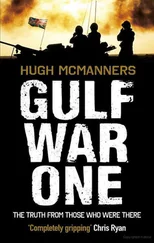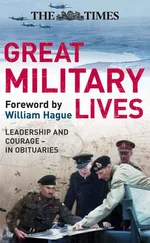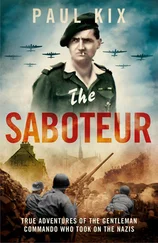Hugh McManners - Falklands Commando
Здесь есть возможность читать онлайн «Hugh McManners - Falklands Commando» весь текст электронной книги совершенно бесплатно (целиком полную версию без сокращений). В некоторых случаях можно слушать аудио, скачать через торрент в формате fb2 и присутствует краткое содержание. Город: London, Год выпуска: 2014, ISBN: 2014, Издательство: Nightstrike Publishing, Жанр: nonf_military, Биографии и Мемуары, на английском языке. Описание произведения, (предисловие) а так же отзывы посетителей доступны на портале библиотеки ЛибКат.
- Название:Falklands Commando
- Автор:
- Издательство:Nightstrike Publishing
- Жанр:
- Год:2014
- Город:London
- ISBN:978-0-992-81540-0
- Рейтинг книги:4 / 5. Голосов: 1
-
Избранное:Добавить в избранное
- Отзывы:
-
Ваша оценка:
- 80
- 1
- 2
- 3
- 4
- 5
Falklands Commando: краткое содержание, описание и аннотация
Предлагаем к чтению аннотацию, описание, краткое содержание или предисловие (зависит от того, что написал сам автор книги «Falklands Commando»). Если вы не нашли необходимую информацию о книге — напишите в комментариях, мы постараемся отыскать её.
Falklands Commando — читать онлайн бесплатно полную книгу (весь текст) целиком
Ниже представлен текст книги, разбитый по страницам. Система сохранения места последней прочитанной страницы, позволяет с удобством читать онлайн бесплатно книгу «Falklands Commando», без необходимости каждый раз заново искать на чём Вы остановились. Поставьте закладку, и сможете в любой момент перейти на страницу, на которой закончили чтение.
Интервал:
Закладка:
The ship suddenly slowed, wallowing as her engines went into reverse. The RIB was winched down into the darkness, and as we touched the now very choppy sea, Peter Beavers started the engine. He’d spent time checking then running it in a water tank, so it was warm and fired up immediately. We turned onto a heading toward the now invisible mass of West Head, five miles north of us.
It was 26 May at 0030 hours.
After 30 minutes the weather got much worse, waves breaking over the boat. We were filling with water. The engine was faltering but kept firing so we pressed on. The bungs started leaking, then the engine decided to stop intermittently. We began bailing.
Eventually West Head loomed out of the darkness, but as sea conditions were so bad, now Force 7 to 8, we forgot our good intentions about using the Chatelaine, which stayed in its case under water at our feet, pressing on without attempting a thermal sweep.
Once we entered the relative shelter of the Bay, the sea wasn’t quite so bad. Thick belts of floating kelp [9]stopped us getting close to the shore. But it then clogged up our propeller, being towed along behind our boat like an oversized bridal train. All our night observation devices were rendered useless by the weather, the rain appearing as red spots that obliterated everything else.
I located our landing position, but thick seaweed made it impossible to get even close. A prominent island in the middle of the channel at the mouth of the estuary called Knob Island, looked like the only other place we might land and observe. It also looked like just the place for a standing sentry. So two of our team swam ashore and searched the island, which was only fifty feet high and a hundred feet in diameter, with waist high tussock grass all over. We brought the RIB in close then waded ashore.
Steve and I sat on the top, in between the thick clumps of grass, and I contacted the ship on the radio. But during the soaking-wet trip, the radio’s headset terminals had got damp, despite the numerous plastic bags in which it was wrapped, which under more usual sea conditions, keep things dry. We sat there blowing on the terminals, then cannibalised dry connectors from our spare radio. With a hybrid set, we finally established usable communications, the ship reported ready and shells started coming down.
I put some 60 rounds onto the enemy’s’ main fuel dump (target number ZJ 1069) mixing VT (variable time fuses that make the shells explode 25 or 50 feet above the ground, spreading a hail of shrapnel forwards and downwards) with ground-detonating shells to puncture the cans and start a fire. Unfortunately water in the radio was still making transmissions intermittent, so while waiting for the next shells to be fired, we spent a lot of time blowing on the connections and swapping leads.
The tide was now receding. Although the protection team had been in the water disentangling seaweed from our engine, Pete Beavers decided we should get out into the middle of the bay before the kelp got too thick for us to move.
Our shelling was accurate and several fuel tanks exploded. There was firing from Argie positions, which helped me get my bearings, confirming the information I already had as to their locations. In the blackness, the ground only became visible in the flash as our shells detonated, or through the nightscope (a small image intensifier). The deep boom of the gun firing out to sea, and the tremendous crash of the 4.5-inch shells exploding close by, echoed across the quiet bay.
As we motored away from Knob Island, the RIB’s engine suddenly revved up. Pete Beavers fished around in the water then announced we’d lost the propeller, and it being HMS Plymouth’s boat, had no spare. He made an ironic announcement:
“You know how I tell you on the SC3 course that the only way home is to paddle? Well, we are in literally just that situation for real. I suggest we get used to the idea of a very long paddle.”
So in twos, we began paddling back out to sea where the ship was waiting, about seven miles away. A stiff wind was blowing us onto the shore towards the now very wide-awake Argie force. Our paddling was doing little more than keep us in the same place, and was very hard work. Being slowly blown ashore, I started working out how if we had to land, we could get back round on foot to East Point and our emergency pick-up point.
The battering we’d suffered on the way in had forced out one of the RIB’s bungs, so one of the air compartments had collapsed and we were again filling up. The missing bung was underneath the boat, so we couldn’t replace it. To avoid sinking, the tempo of our bailing increased quite dramatically.
It was now 0300, and as our cut-off time with Plymouth was 0600, it was very important in spite of the excessively watery conditions, to get a radio set going once more. Both my HF and VHF radios were now wet, but by a further cannibalisation of parts we were able to get the VHF set working.
On HMS Plymouth , with the worsening weather, they’d lost us on their radar, and now we’d gone quiet – so they were very worried. Brum Richards and the SBS liaison officer told Plymouth’s Captain David Pentreath, that what happened next had to be dictated by us, as we knew what was going on – the standard rule when working with Special Forces.
But after 45 minutes further radio silence from us, David Pentreath asked Brum what he thought had happened. Brum told me later that he’d taken the Captain aside, then very privately suggested there were four possibilities:
“They’ve been captured – which is unlikely without us hearing a fire fight, or any radio SITREPs. Both their radios could be unworkable, due to the bad weather. The enemy could be very close to them so they can’t transmit. Or the last rounds we fired, hit them by accident and they’re all dead…”
Brum said that on hearing this last option, David Pentreath went as white as a sheet. Brum had to repeat to him that they must wait for things to develop.
As this conversation was taking place down in the Ops Room, the SBS liason officer was out on the bridge wing listening for any VHF communications. He summoned Brum to listen to a strange new transmission on the SB frequency. Brum recognised my voice and did a remarkable job interpreting my less-than-orthodox fire orders, as reception faded and crackled.
Pete Beavers noted a change of wind away from the Argie positions to WSW. We stopped paddling, made a cruciform out of the paddles and lashed up a poncho as our sail. This blew us sideways but away from the enemy, and with much adjustment plus paddling we started to move back out to sea. Our sail was also visible on the ship’s radar.
I was bailing. As we now had communications it seemed profitable to continue the bombardment.
My procedures were minimal: ‘Ten salvoes on the far right-hand target’, but they worked. I bailed furiously, then after counting the number of seconds from firing, looked at the target as the shells came over. When Steve Hoyland took his turn paddling, he gave the SB guys the briefest imaginable course in NGS signalling:
“Whatever the ship says you repeat back to them verbatim loud enough so I can hear, then whatever I say to you, you repeat back to them word-for-word.”
Our shelling was making the Argies extremely agitated. It was therefore very comforting to be moving away from the shore. The anti-aircraft battery to the east of the settlement started firing, so I shelled them and they went permanently quiet.
We were now drifting towards the eastern shore. The cut-off time for Plymouth getting back to the safety of the San Carlos air defence umbrella by daybreak was approaching. If she were to be caught by an air attack on her own in Falkland Sound, she’d almost certainly be sunk – as had already happened to HMS Ardent .
Читать дальшеИнтервал:
Закладка:
Похожие книги на «Falklands Commando»
Представляем Вашему вниманию похожие книги на «Falklands Commando» списком для выбора. Мы отобрали схожую по названию и смыслу литературу в надежде предоставить читателям больше вариантов отыскать новые, интересные, ещё непрочитанные произведения.
Обсуждение, отзывы о книге «Falklands Commando» и просто собственные мнения читателей. Оставьте ваши комментарии, напишите, что Вы думаете о произведении, его смысле или главных героях. Укажите что конкретно понравилось, а что нет, и почему Вы так считаете.












